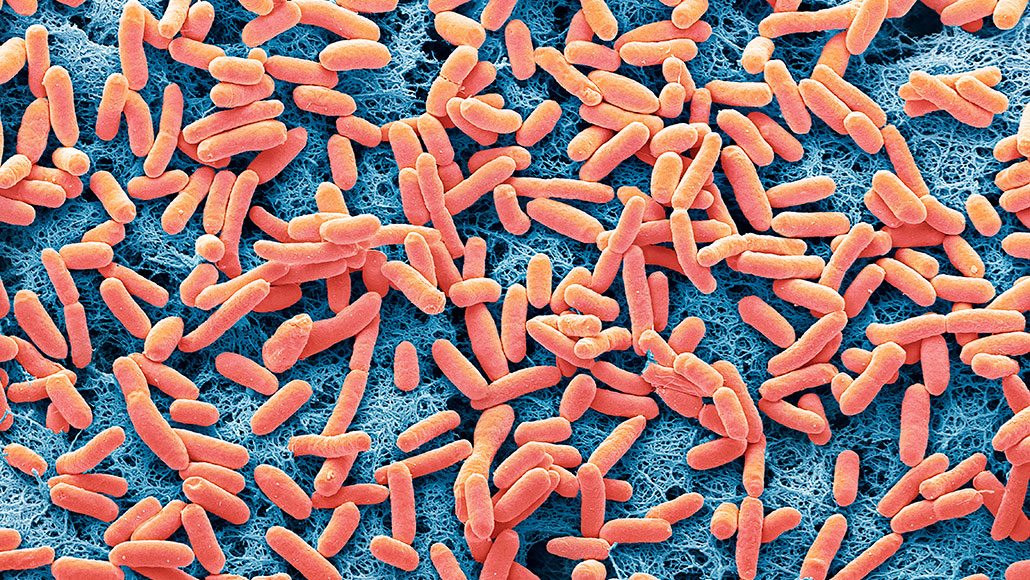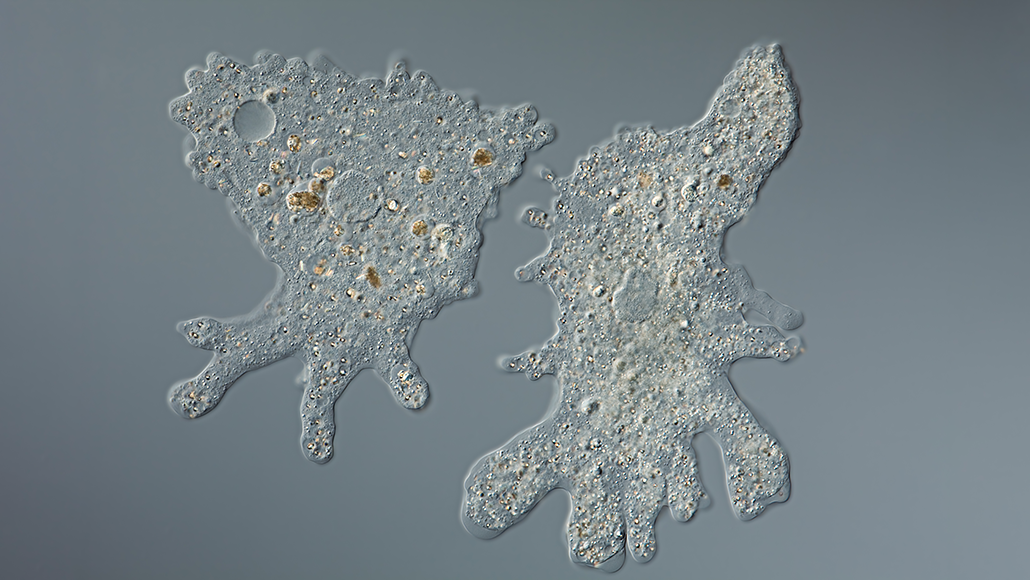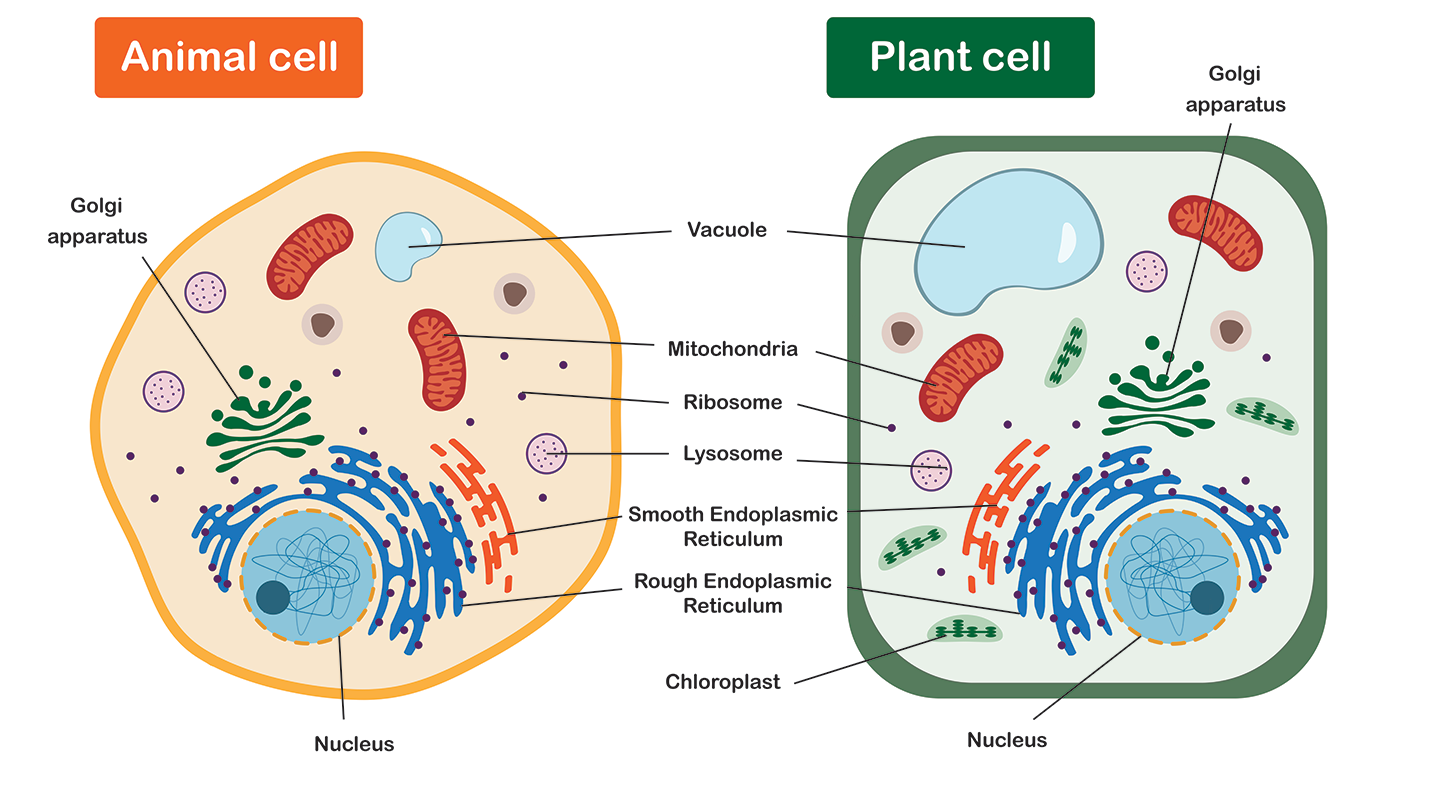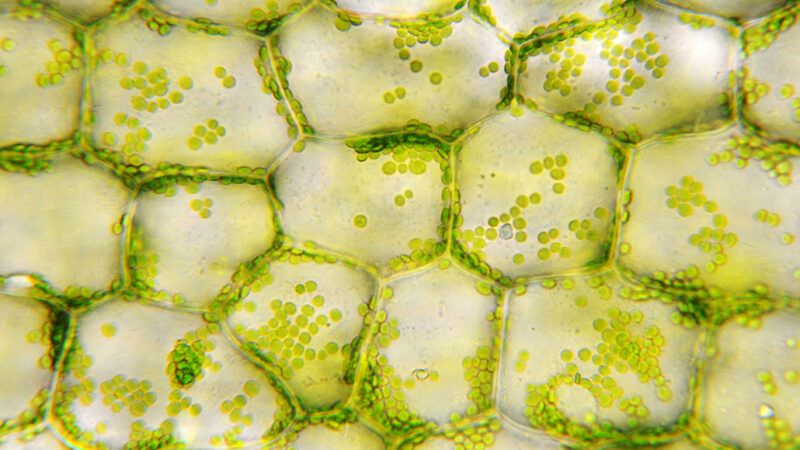Which Of The Cell Parts Have Their Own Dna Which Can Cause Diseases In Animals?
Take a await at your best friend, your dog — or even a snail using its muscular foot to move up the stalk of a blossom. All of them look quite different. And that's due to the highly organized cells from which they're made. The human being body has roughly 37 trillion cells.

Virtually living things, however, are non multicellular. They consist of a single cell. Such unicellular organisms generally are so modest that we'd need a microscope to see them. Bacteria are among the simplest unmarried-celled organisms. Protozoa, such as amoebas, are more than complex types of one-celled life.
A cell is the smallest living unit of measurement. Inside every jail cell is a host of structures known as organelles. "Every cell has essential structures that are the same, like every firm has a kitchen sink and a bed. But how big and complex they are, and how many of them there are, is going to vary from cell type to cell type," says Katherine Thompson-Peer. She's a jail cell biologist at the University of California, Irvine.
If cells were homes, the simplest ones — prokaryotes (Pro-KAER-ee-oats) — would be one-room studio apartments. The kitchen, bedroom and living room would all share one space, explains Thompson-Peer. With few organelles, and all of them next to each other, activities all take identify in the centre of these cells.
Over time, some cells became more complex. Called eukaryotes (Yu-KAER-ee-oats), these now brand upwardly animals, plants and fungi. Some ane-celled organisms, such every bit yeasts, also are eukaryotes. These cells are all like unmarried-family houses — with walls and doors making up split up rooms. A membrane encloses each organelle in these cells. Those membranes "segregate different things that the cell does into different compartments," explains Thompson-Peer.
The nucleus is the most important organelle in these cells. It houses a eukaryotic prison cell's DNA. It'south too what distinguishes these cells from prokaryotes. Fifty-fifty one-celled eukaryotes, such as the amoeba, accept a nucleus. Simply cellular complexity is most obvious in multi-celled organisms. If we follow the business firm illustration, a multi-celled organism would be a loftier-ascent apartment edifice, says Thompson-Peer. Information technology contains lots of homes — cells. "And they're all a footling bit different in terms of shape. But they all work together to be a edifice."

Cells from organisms big and minor include:
a cell membrane (also called a plasma membrane). This thin, protective outer layer surrounds a cell, similar the outer walls of a business firm. Information technology protects the structures inside and keeps their environment stable. This membrane too is somewhat permeable. That means it allows some things to motility into and out of a cell. Recollect of windows in a business firm with screens. These allow air flow in but keep unwanted critters out. In a cell, this membrane allows nutrients in and unwanted wastes to get out.
ribosomes. These are little factories that make proteins. Proteins are important to every function of life. We need proteins to grow, to repair an injury and to transport nutrients and oxygen in our bodies. To build proteins, a ribosome binds to a specific part of a cell'south genetic material known equally messenger RNA. This allows it to read the instructions telling this mill which building blocks — called amino acids — to assemble in making a protein.
DNA. Every organism has a genetic code called Dna. That'south brusk for deoxyribonucleic (Dee-OX-ee-ry-boh new-KLAY-ick) acrid. It's like a huge instruction manual, telling cells what to exercise, how and when. All that data is stored in nucleotides (NU-klee-uh-tides). These are chemical building blocks fabricated of nitrogen, carbohydrate and phosphate. When new cells develop, they brand an exact copy of the sometime cells' DNA so the new ones know what tasks they'll be expected to exercise.
Every jail cell in an organism'south body has the aforementioned DNA. Withal those cells tin can wait and function quite differently. And here's why: Different cell types access and utilize different parts of the DNA didactics book. For instance, an eye jail cell is translating the parts of its DNA that tell it how to make eye-specific proteins. Similarly, a liver cell translates the sections of DNA that tell it how to make liver-specific proteins, explains Thompson-Peer.
You might call back of DNA as the script for a play, she says. All the actors in Shakespeare's Romeo and Juliet have the same script. Nonetheless Romeo reads but his lines, Thompson-Peer says, before going off to do Romeo things. Juliet reads only her lines and so goes off and does Juliet things.

Key features of cells from multi-celled organisms include:
a nucleus. The nucleus is a protective membrane surrounding a cell's DNA. It keeps this genetic "instruction transmission" prophylactic from molecules that could impairment it. The presence of a nucleus is what makes a eukaryotic cell different from a prokaryotic one.
endoplasmic reticulum (En-doh-PLAZ-mik Reh-TIK-yoo-lum). This identify, where a prison cell makes proteins and fats, has a long name. Simply you lot tin call it "ER" for short. It'south a flat sheet that gets folded tightly back and along. Those known every bit rough ERs makes proteins. The ribosomes that attach to this ER requite it that "rough" appearance. Smooth ERs make not only lipids (fatty compounds such as oils, waxes, hormones and most parts of the cell membrane) merely also cholesterol (a waxy textile in plants and animals). Those proteins and other materials become packaged into tiny sacs that pinch off from the edge of the ER. These of import products of cells are and then transported to the Golgi (GOAL-jee) appliance.
Golgi apparatus. This organelle modifies proteins and lipids in much the same way auto parts are added to the body of a car in the manufactory'south assembly line. For example, some proteins need carbohydrates fastened to them. Later on these additions are made, the Golgi apparatus packages up the modified proteins and lipids, then ships them in sacs known as vesicles to where they volition be needed in the body. It'southward like a post office that receives lots of postal service for different people. The Golgi apparatus sorts the cellular "post" and delivers it to the proper trunk accost.
cytoskeleton. This network of tiny fibers and filaments provides structure to a jail cell. Information technology's like the frame of a house. Different cells have dissimilar shapes and structures based on their office. For example, a musculus prison cell has a long, cylindrical structure and so that it can contract.
mitochondria. These power generators of the cell interruption down sugars to release their energy. Then the mitochondria (My-toh-KON-dree-uh) package that energy into a molecule called ATP. It'south the form of free energy that cells use to ability their activities.
lysosomes. These organelles are the cell'southward recycling centers. They suspension down and assimilate nutrients, waste product or sometime parts of the jail cell that are no longer needed. If a cell is as well damaged to repair, lysosomes assist the cell destroy itself by breaking down and digesting all the structural supports likewise. That blazon of cell suicide is known equally apoptosis.
vacuoles. In beast cells, several of these pocket-sized sac-like structures work a chip similar lysosomes, helping to recycle wastes. In found cells, there is 1 large vacuole. It mainly stores water and keeps a cell hydrated, which helps requite a institute its rigid structure.

cell wall. This rigid layer jackets the outside of a plant's prison cell membrane. It's made of a network of proteins and sugars. Information technology gives plants their stiff structure and provides some protection from pathogens and from stress, such equally water loss.
chloroplasts. These constitute organelles use energy from the sun, along with water and carbon dioxide in the air, to make food for plants through the process known equally photosynthesis. Chloroplasts (KLOR-oh-plasts) have a green pigment inside them called chlorophyll. This paint is what makes plants greenish.
Source: https://www.sciencenewsforstudents.org/article/explainer-cell-parts-animal-plant-prokaryotes-eukaryotes
Posted by: williamsannot1974.blogspot.com


0 Response to "Which Of The Cell Parts Have Their Own Dna Which Can Cause Diseases In Animals?"
Post a Comment